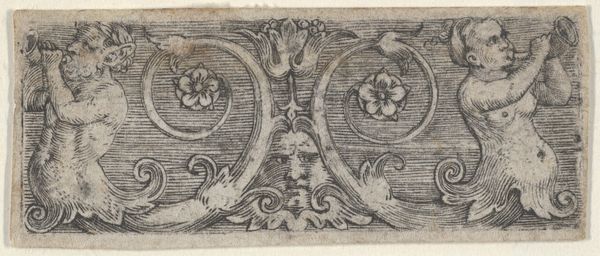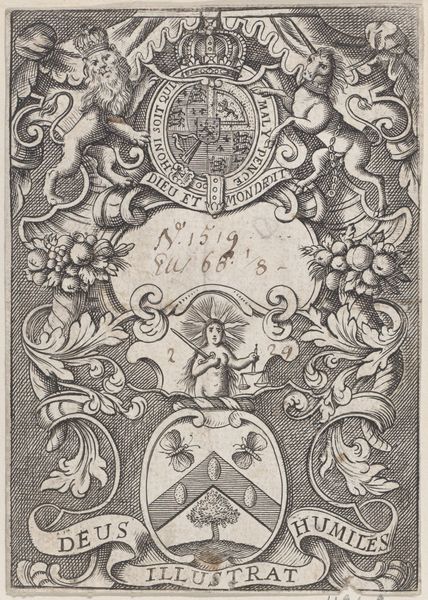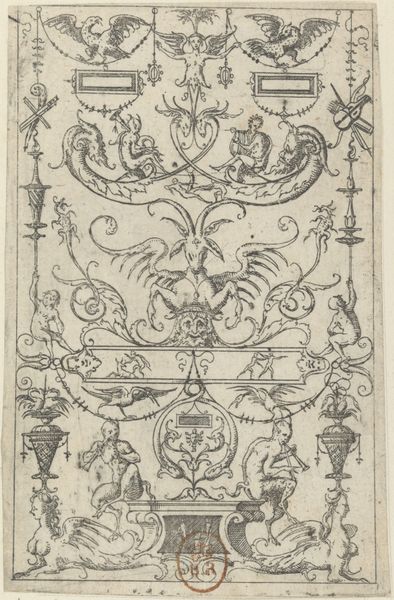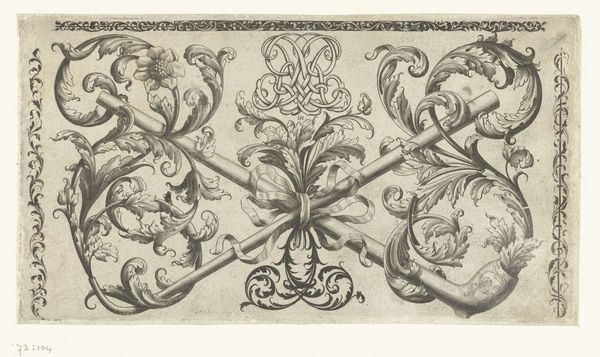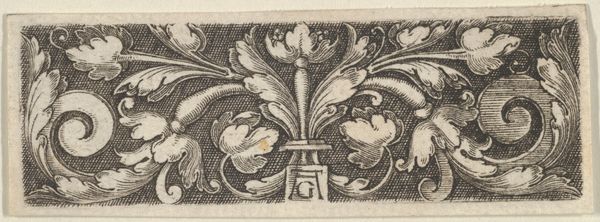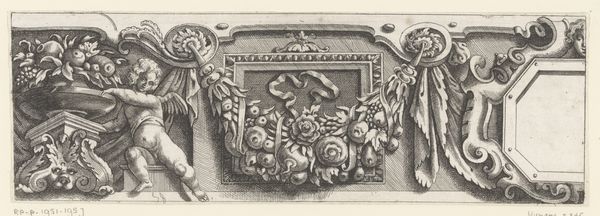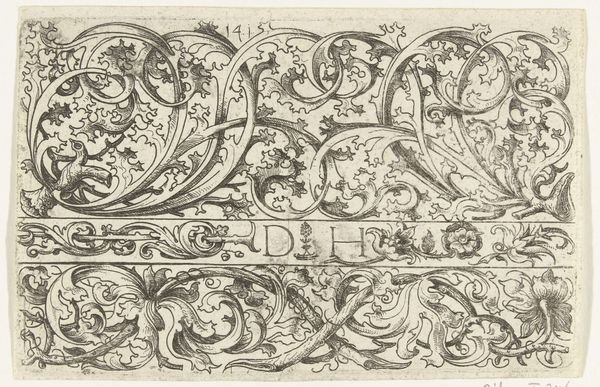
drawing, print, relief, paper, ink, engraving
#
drawing
#
pen drawing
#
mechanical pen drawing
# print
#
pen illustration
#
pen sketch
#
relief
#
figuration
#
paper
#
11_renaissance
#
ink
#
pen-ink sketch
#
pen work
#
sketchbook drawing
#
italian-renaissance
#
engraving
Dimensions: height 30 mm, width 81 mm
Copyright: Rijks Museum: Open Domain
This ornament, featuring putti flanking a shield, was made in 1529 by an anonymous maker using an engraving process. Engraving is a printmaking technique in which a design is cut into a metal plate, in this case most likely copper, with a tool called a burin. The incised lines hold ink, and when the plate is pressed against paper, the design is transferred. The fine, precise lines and subtle shading are a testament to the engraver's skill and control over the burin, demanding specialized knowledge passed down through workshops, playing a crucial role in disseminating visual ideas during the Renaissance. Prints like this one played an important role in the circulation of design motifs. Artisans could adapt and incorporate such details into their work. So, while this engraving may seem like a minor object, it reflects a complex network of labor, skill, and the exchange of ideas, blurring the lines between art, craft, and commerce.
Comments
No comments
Be the first to comment and join the conversation on the ultimate creative platform.
